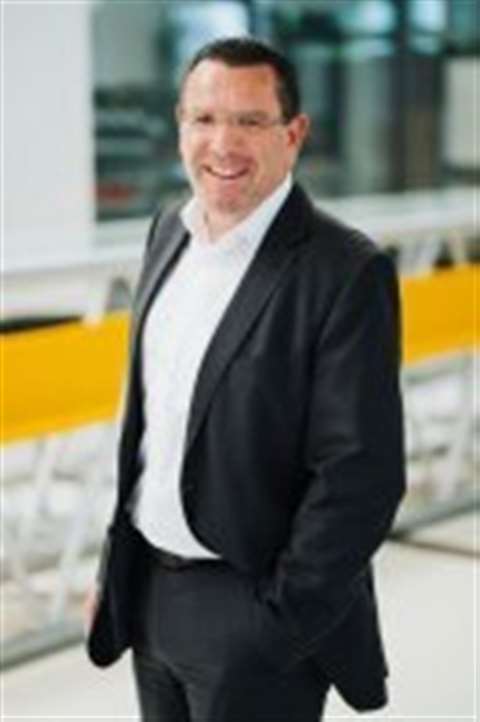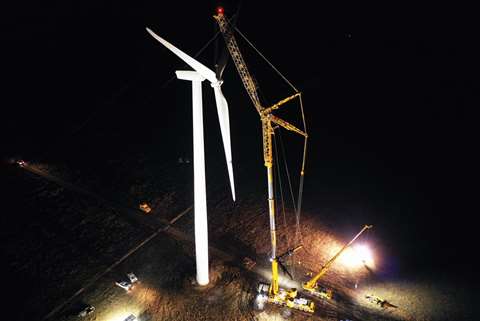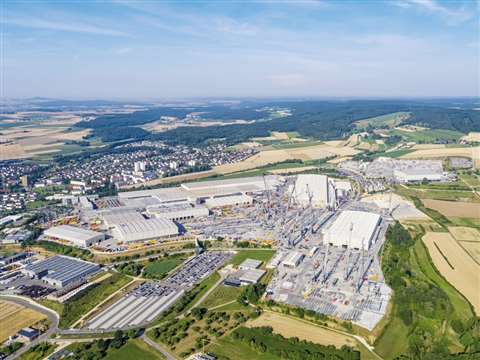Interview: Liebherr equipped to navigate unpredictable trends
02 April 2021
Alex Dahm learns how the Liebherr-Werk Ehingen mobile crane division in Germany dealt with the impact of the Covid-19 pandemic and about their future action plan.
If leading the way in the crane industry is how manufacturer Liebherr is seen, then their approach should be more closely followed as we emerge from lockdowns implemented to combat the global pandemic.
ICST editor Alex Dahm asked Christoph Kleiner, managing director at the Liebherr-Werk Ehingen mobile crane division in Germany, about the impact of the virus and how the future is looking in a post-Covid landscape.
Alex Dahm: What has Covid-19 precipitated in terms of a different world when we emerge on the other side?
 Christoph Kleiner, Liebherr-Werk Ehingen managing director
Christoph Kleiner, Liebherr-Werk Ehingen managing director
Christoph Kleiner: From a general perspective, appreciation of a free world will be higher than before. “Free” in terms of socialising, travelling and experience of cultural events.
From a business perspective, this is for me customer visits, exhibitions and personal exchange with my colleagues in our worldwide organisation. All these reasons for business trips in the past, which have been sometimes stressful and maybe too many, might come back at a reduced level - but will definitely be more appreciated again.
On the other side, we have also learned what can be achieved without travelling, helping us to be more balanced and efficient. Therefore, the decision whether to travel or not is made on different reasons. Whether this remains or we will fall back into “old” routines will depend on all of us. We should better not forget, our industry is a people industry, so we have to socialise.
AD: How will the crane industry be different in a post-Covid-19 world?
CK: We will have to see how we all come out of this situation. We struggled in the beginning with the supply chain, but after a few weeks, everything went smoothly again.
Ever since we have been delivering to all countries, servicing everywhere with our local service teams, and supported online from the Ehingen engineers.
Not everyone was able to do the same and come out of this the way that we did. It was only possible due to our global service organisation combined with our good relationship and partnership with our customers, suppliers and partners.
 Wind energy is a major driver for Liebherr's larger models, such as the 700 tonne capacity LTM 1650-8.1
Wind energy is a major driver for Liebherr's larger models, such as the 700 tonne capacity LTM 1650-8.1
For the future, I am quite optimistic. We see many federal investments, especially in the western world in renewable energy and infrastructure that means crane jobs and cranes.
Many industries are still solid, and there is a lot of construction work to do. However, what will change is the way we service cranes, for example with remote diagnostics.
In addition, the way we train our customers and employees. During the pandemic we have switched a lot to online training and we will keep up this successful experience, and even enlarge it.
There will be more digital and online elements in the crane industry than before. Nonetheless, we need the important value of partnership, and this comes from trust. Moreover, trust is built on a personal base. So not everything will be different.
AD: How has Covid impacted your product development plans? For example, is there less need for new models targeted at oil and gas work and more for renewables, such as wind turbine erection?
CK: We see the wind industry coming back in some European countries from an all-time low. This results from federal investments due to Covid-19.
Twenty years earlier the money would have been spent on fossil fuels and infrastructure, now it is renewables and infrastructure. The advantage for us: nothing builds without cranes.
We cannot say we have changed the portfolio due to Covid-19, but we have changed a bit based on customer demands. For example, the new LR 1700-1.0 is a real wind runner. Based on the dimensions of the LR 1600, but with the capacities of a 750 tonne crane, it is the right answer for a huge part of the wind industry’s recent developments.
The same is true for the 800 tonne upgrade for the LTM 1750-9.1, leading to higher load capacity, lifting heavier turbines. Our new LTM 1650-8.1 is ideal for all kinds of infrastructure projects, like railroad or highway bridges.
We developed new boom systems and jibs for the more demanding wind applications. An example is the F2-jib we did with Buckner Companies, it reduces three lifts to just one.
AD: How are global crane sales at the moment?
CK: We have been doing quite well in our established markets, Covid-19 did not have that much impact on us and the business year 2020 was only marginally below the level of our record year in 2019.
Orders are also back on track. After a short slowdown in April and May 2020, we had a good second half of 2020.
Nonetheless, we see regional differences, as the pandemic comes and goes in waves around the world. Central Europe is very strong at present, Southern Europe is lagging a bit. In the US and Canada we have good development overall, as well as in Australia. We managed quite well to remain busy in Middle East and parts of Asia, while Latin America is struggling a bit.
AD: Do you expect a significant increase in orders for new cranes when people have all been vaccinated?
CK: I do not think so. Many of the industries we are in have been running smoothly throughout 2020 and in the first quarter of 2021. Yes, we have seen some industries heavily affected, but not too much crane related.
Federal investment has created demand for cranes and many of our customers give the feedback that they are busy as before, from small to big crane rental companies.
There are definitely some countries where demand will rise a bit. However, we do not expect a huge demand increase as we are already on a good level.
AD: How are sales by crane type and region?
CK: We are currently delivering close to two LTM 1650-8.1 every week. That is a powerful statement.
Larger cranes are requested everywhere in the world. The small segment is seeing demand worldwide at a good level, while the middle segment is on a normal level.
AD: Aside from Covid-19, as momentum builds for cranes with less environmental impact, what is the Liebherr plan? For example, in terms of fuel or power source, what will predominate? Will it be hydrogen or other alternative fuel, internal combustion or fuel cells or full battery-electric?
CK: The challenges for us as a mobile crane manufacturer are manifold in this respect, as your question already implies. It is indisputable that we have had to do something.
Liebherr, for example, currently investigates and offers a wide range of environmentally compatible solutions.
With the current Stage V exhaust standard according to EU 2016/1628, “clean” air is emitted from the tailpipe. Nevertheless, the CO2 [carbon dioxide] problem remains.
 Liebherr-Werk Ehingen's plant has dramatically grown in the past 20 years
Liebherr-Werk Ehingen's plant has dramatically grown in the past 20 years
Detailed investigation and analysis show alternative fuels, such as HVO [hydrotreated vegetable oil], are already capable of reducing the CO2 emissions of a representative mobile crane by 74 per cent when taking the integrated cradle to grave approach over the entire life cycle of a mobile crane.
In addition, e-fuels produced by renewables could deliver a 60% reduction. For green hydrogen, we are talking about -55% (internal combustion) or -66% (fuel cell). However, hydrogen applications are not practically feasible at thid present time and are therefore a purely theoretical consideration.
For our mobile cranes, we see HVO as an absolute target in the short term. In the near future we plan to use HVO for the commissioning and testing of our new cranes at our plant, and the initial fuelling ex-works. In preparation, we have tested our cranes intensively.
We are responding to “Local Zero Emission” zones with an alternative electric drive for the superstructure (initially starting with one crane model), which fully compensates for the use of this diesel engine during crane operation. More about this at Bauma.
AD: What is your most commonly recurring thought about the post-Covid-19 world?
CK: What did we learn from Covid-19 and how can we translate this into the post-Covid world?
How to balance efficiency and resilience, and develop flexible and adaptable business models?
Furthermore, how to shift more from a command and control model to a purpose-driven network approach, along with more [digital] insight based decision-making?
These are more management and leadership questions, but I believe if we want to learn from this Covid-19 experience, we must answer them.
AD: What are the first things you will look forward to doing post-Covid-19 when the restrictions are lifted?
CK: Meet my family, my friends again in the old fashion, visiting restaurants and concerts, travel again.
Of course, go on business trips again, meet in real life, shake hands and hug each other. These are all things I can hardly wait for.
STAY CONNECTED


Receive the information you need when you need it through our world-leading magazines, newsletters and daily briefings.




